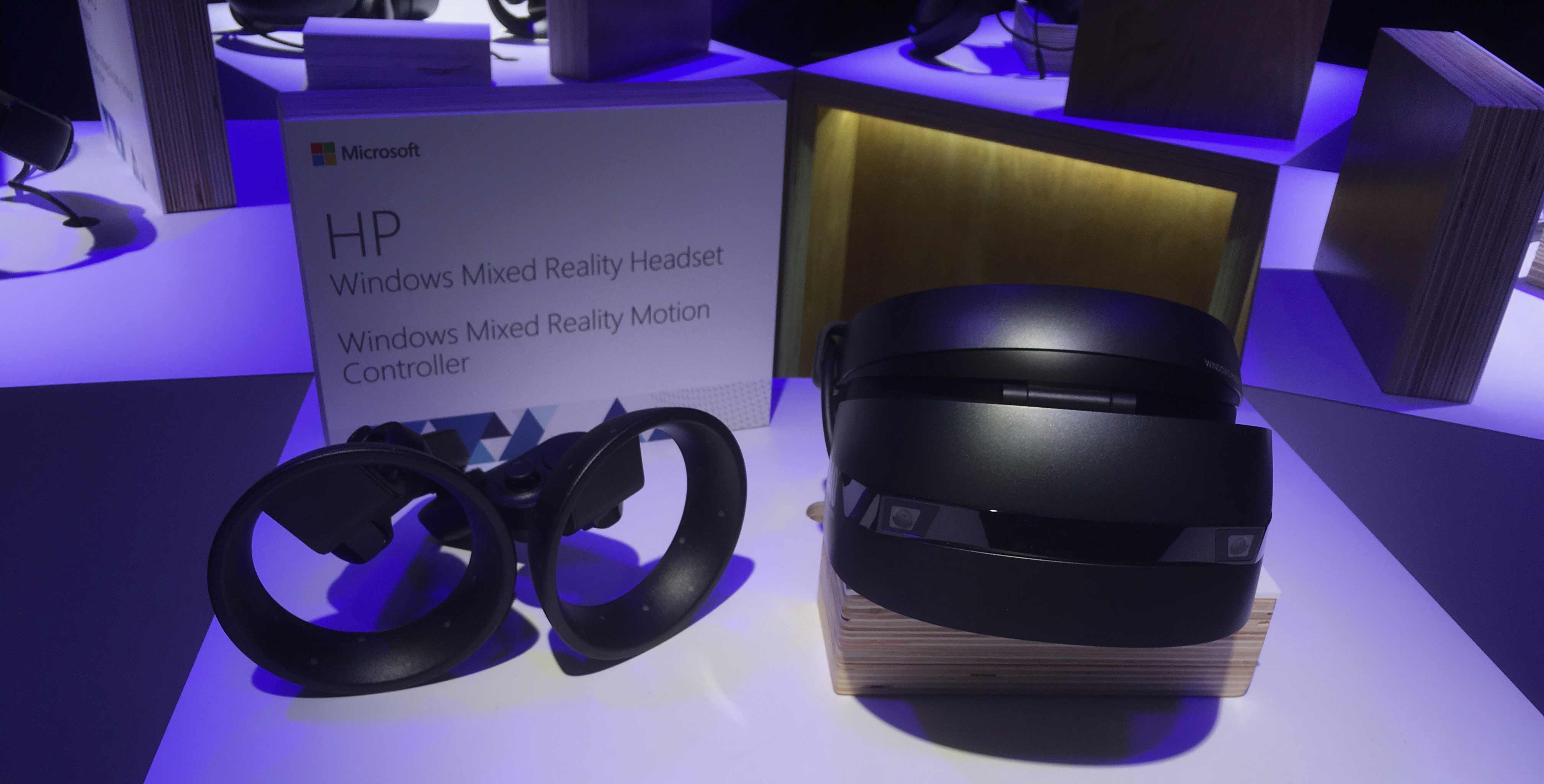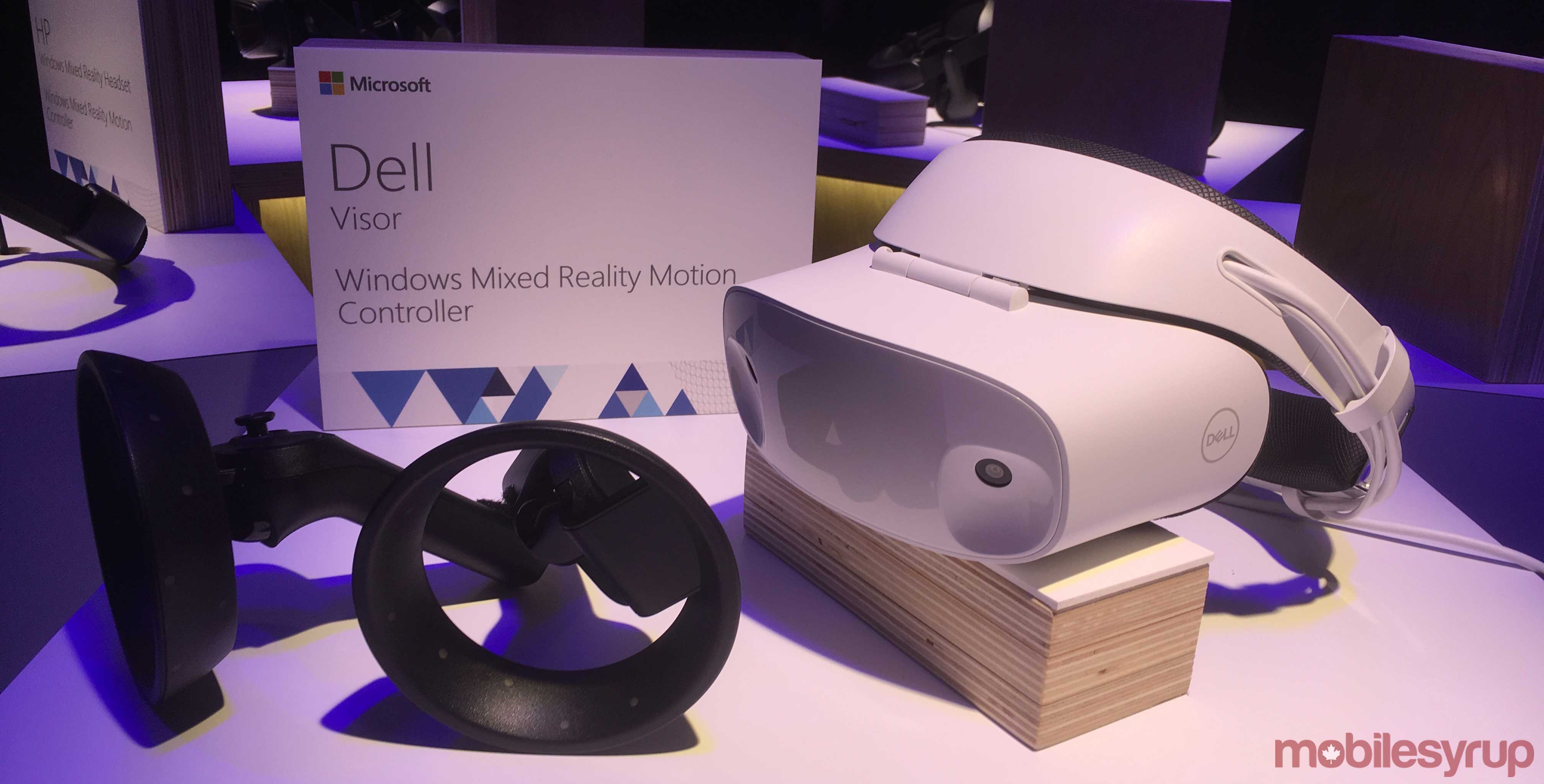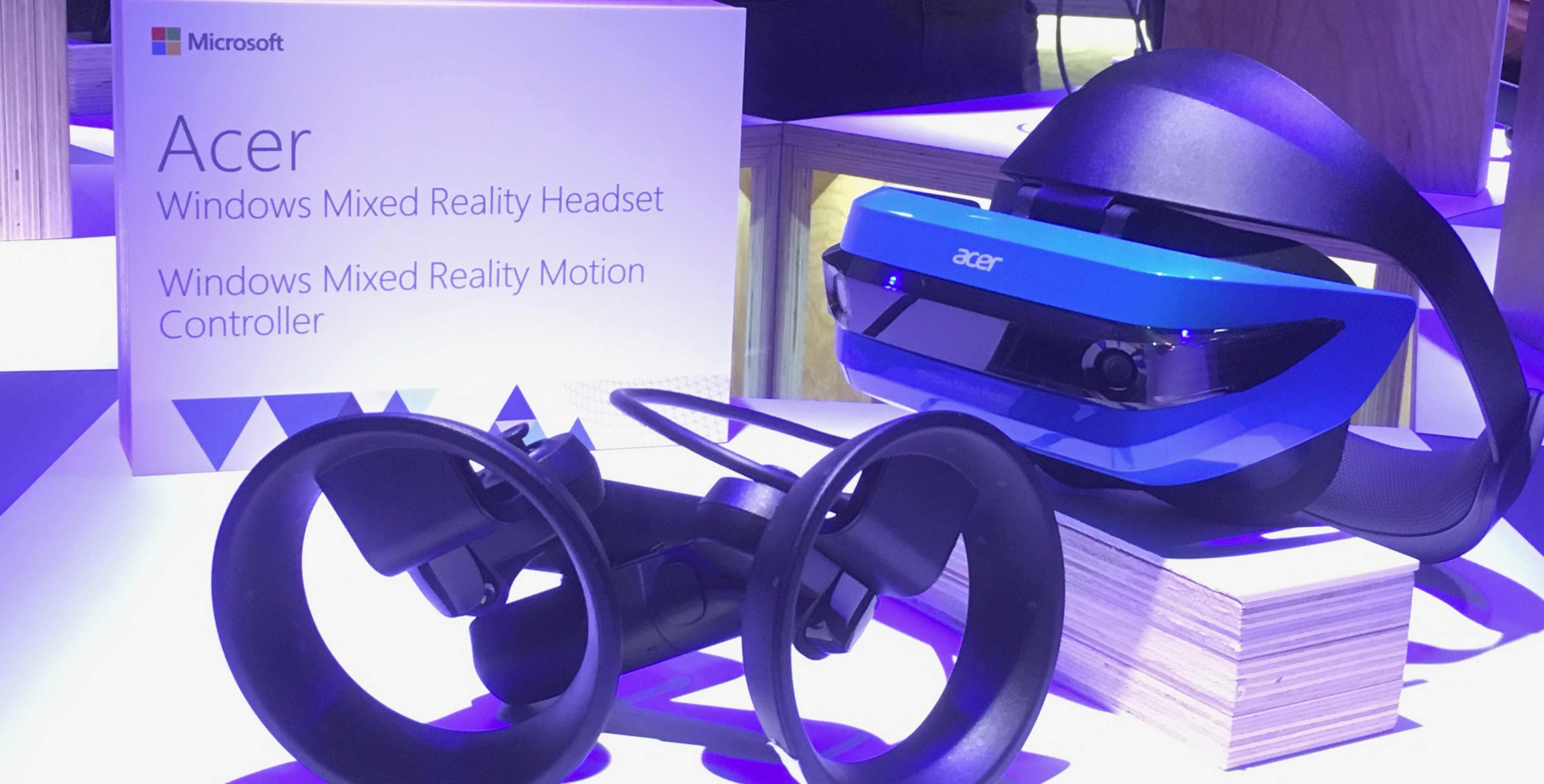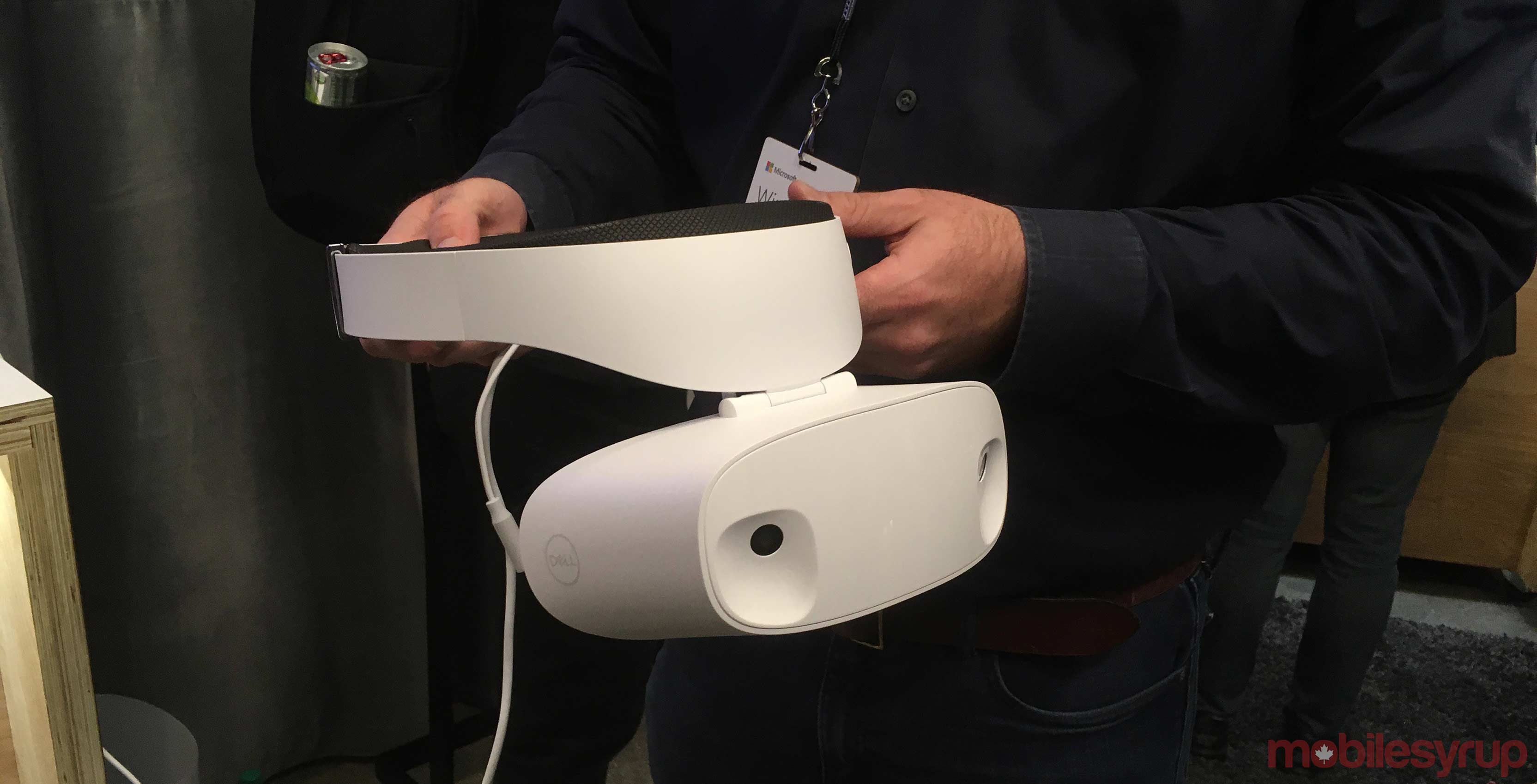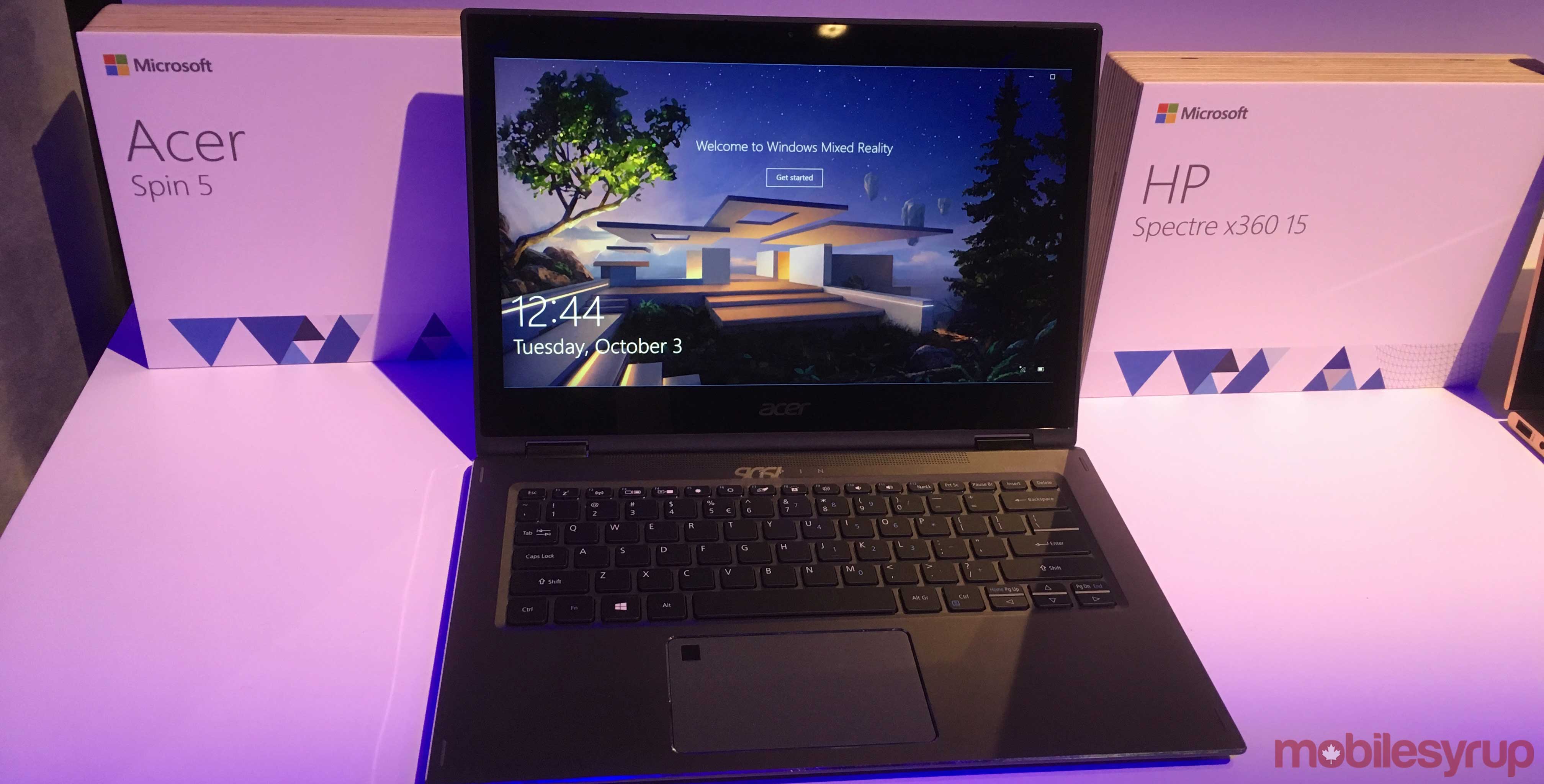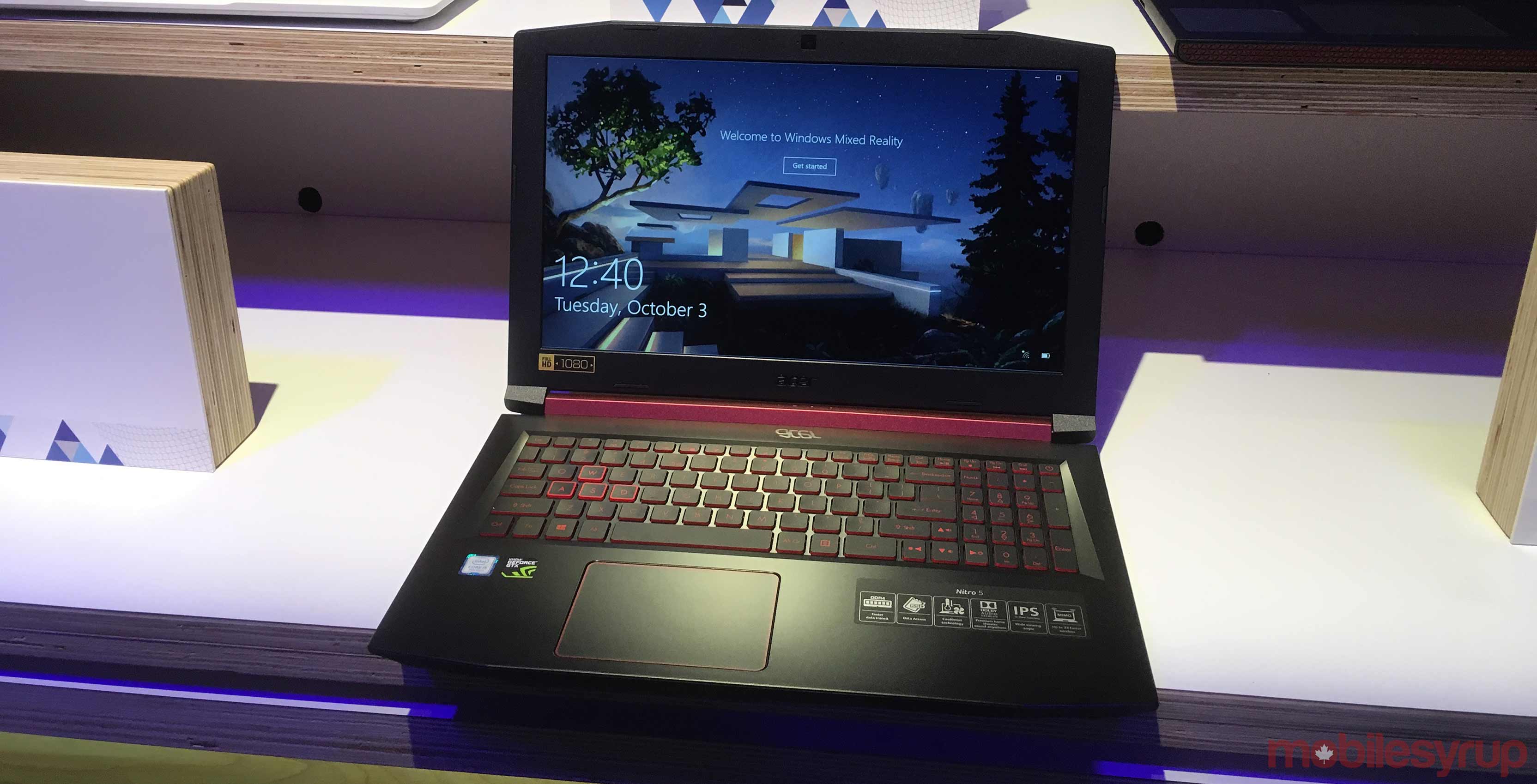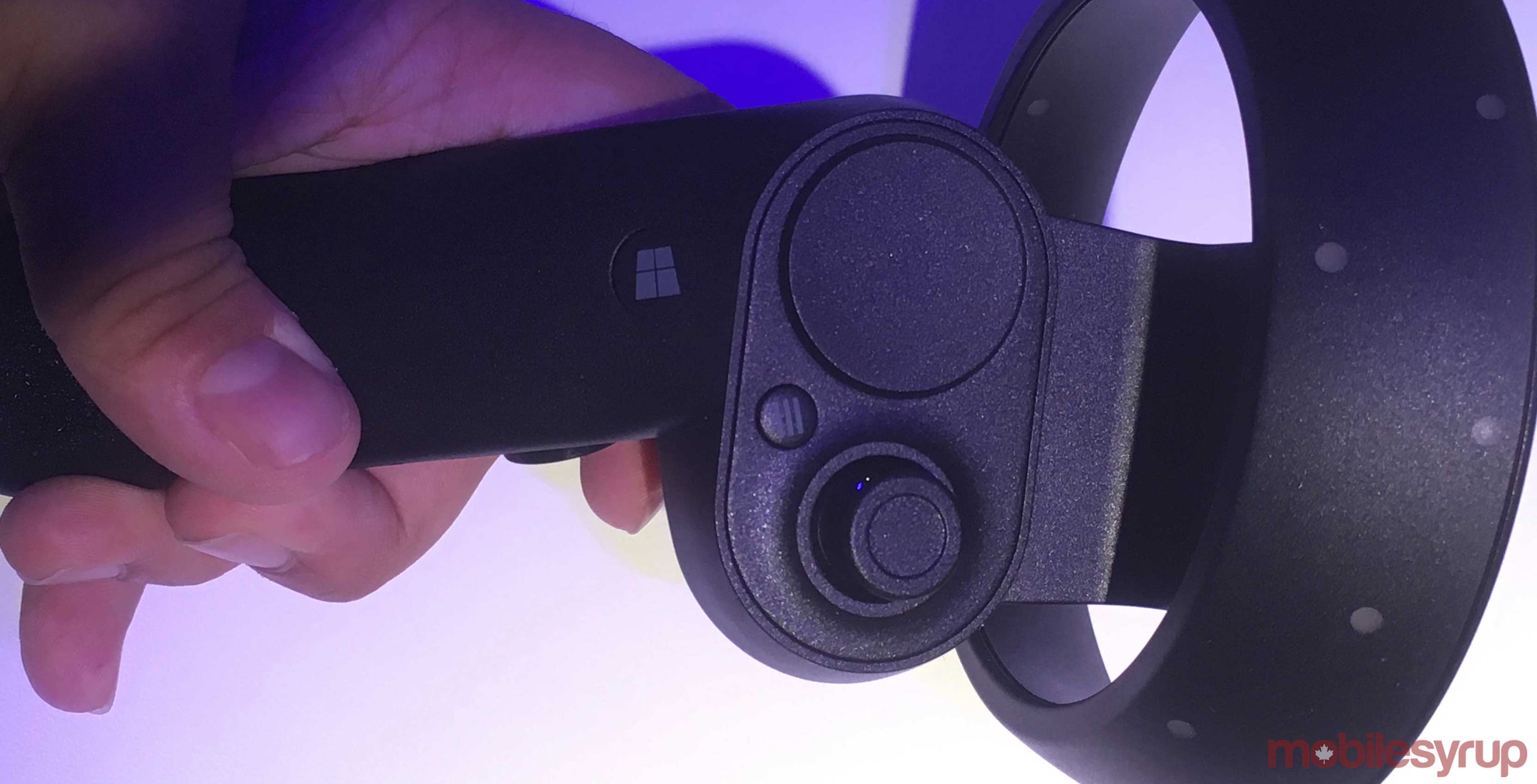
In January 2015, Microsoft unveiled the HoloLens, the world’s first fully self-contained holographic computer. With HoloLens, users are able to interact with virtual images in the real world. A ‘Development Edition‘ of the headset began shipping in early 2016, but this was intended for developers and businesses only.
Now, however, Microsoft is finally looking at capitalizing on the fruits of its labour with Windows Mixed Reality — a family of commercial devices from manufacturer partners that allows users to experience mixed reality content through compatible PCs. Note: for all intents and purposes, mixed reality is virtual reality, it’s just a fancy term Microsoft has coined for its proprietary technology.
The Acer Windows Mixed Reality Headset, Dell Visor, HP Windows Mixed Reality Headset and Lenovo Explorer will release on October 17th as part of the Windows 10 Fall Creators Update, with the newly-unveiled Samsung HMD Oydssey to follow on November 3rd. Asus has also confirmed its own Windows Mixed Reality headset, although it’s set for a spring 2018 release.
With two weeks to go before launch, Microsoft held a media event in San Francisco to give an exclusive presentation by technical fellow and HoloLens inventor Alex Kipman, as well offer hands-on time with the five holiday 2017 Windows Mixed Reality devices.
Coming out of the event, I’m largely impressed — here’s why.
In the comfort of your (cliff) home
The biggest included in Windows Mixed Reality is the Cliff House, a large virtual space to experience all kinds of content in. “Space is the ultimate interface — each place has purpose and each piece of content has context,” Kipman said of Cliff House.
Indeed, my primary takeaway from hands-on time with Windows Mixed Reality is how seamless using Cliff House is thanks to its clever use of space. Outside of an initial brief loading screen to generate the virtual world, I was able to explore the entire Cliff House and its contained activities without any interruptions. You can look around freely by rotating your head, with the controller analog sticks offering small incremental degree camera turn.
Movement can be handled through walking in the real world, with the headset featuring room-scale VR functionality from the headset. However, given the home-sized nature Cliff House, it is easier to position a virtual arrow by holding the analog sticks in order to instantly warp between small distances. Kipman says a feature called ‘Snap to App’ is in place to properly align you in front of an application whenever you warp near one, so it’s never a problem trying face the right direction.
“Space is the ultimate interface — each place has purpose and each piece of content has context.”
Some apps will load for a moment when selected, but otherwise you’re placed in the experience quickly and without any hassle. Whenever you’re done with an app, a simple press of the Windows home button on the motion controller will immediately bring you back to your Cliff House smoothly; it never felt jarring to exit an experience midway through the action.
I was also impressed by how smoothly Microsoft has integrated its various platforms into the Windows Mixed Reality experience. For example, if you want to download additional apps to add to your Cliff House, there is a Windows-themed shopping bag that you can click on to immediately jump to the Microsoft Store.
You can have your Outlook email setup and placed anywhere in the Cliff House for easy access. Your Xbox One games (which are also playable on Windows 10 via the Xbox Play Anywhere program) are easily accessible as well. In his demonstration, Kipman briefly opened the newly-released Canadian indie title Cuphead, fought a colourful cartoon boss and then quit the game. Should you need any assistance during the whole process, Cortana is also always around to lend a virtual helping hand.
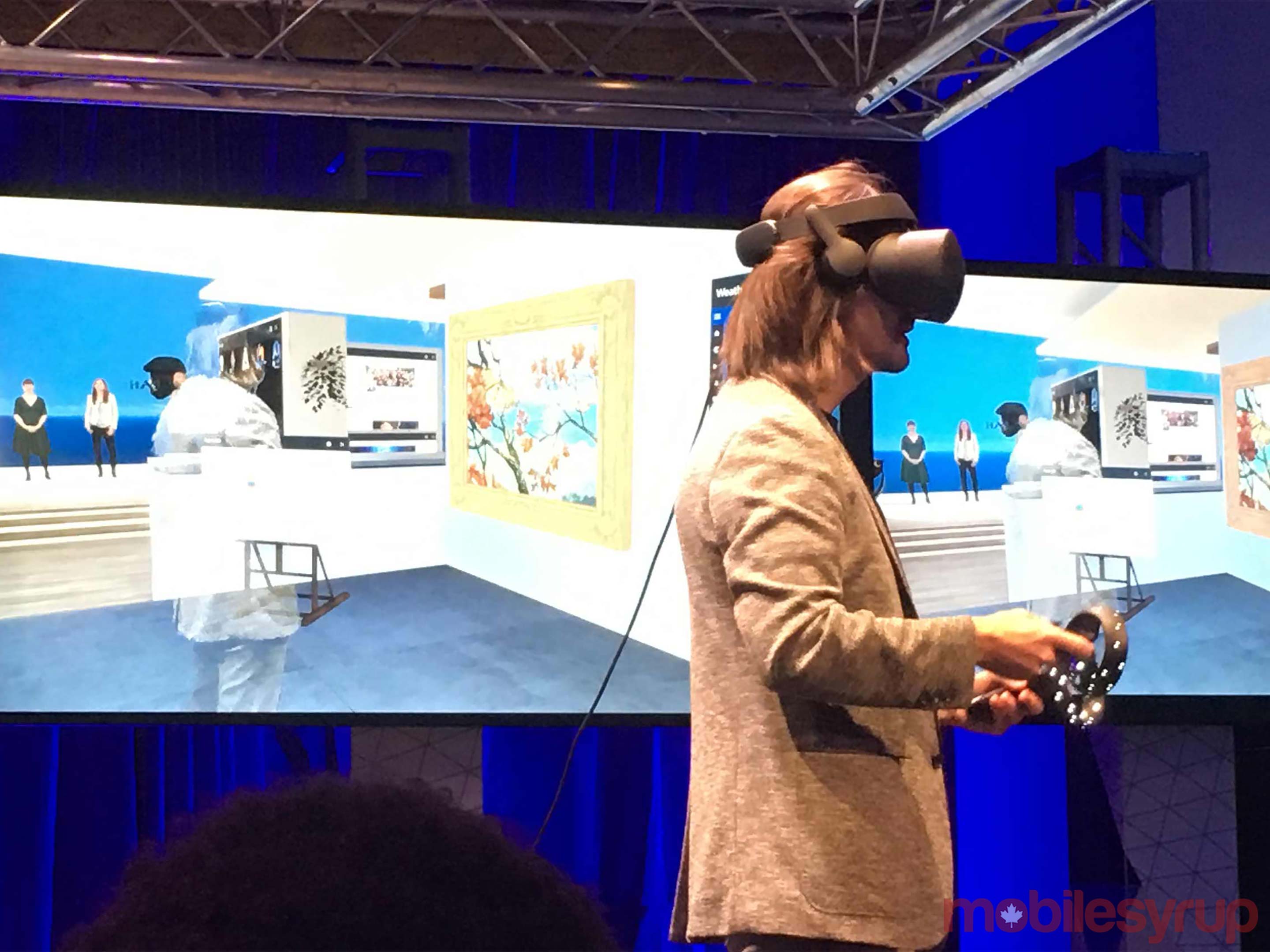
The menu-lite interface, as well as minimal loading screens, truly helps keep the Windows Mixed Reality experience as immersive as possible. I’ve had great times with the PlayStation VR, but having to go back to the PS4’s main menu, scroll through a series of titles and select the one I want to go into really can take me out of the experience. Similarly, while the HTC Vive’s Holodeck hub removes some of this cumbersome menu navigation, it’s still a somewhat drab virtual space to explore different types of apps in. With Cliff House, Microsoft has connected all of the virtual content in a way that is engaging and seamless.
Best of all, it’s also personalized. You can also adorn your Cliff House with various objects to make the space more decorative. In my demos, I had access to at least 60 holographic items I could grab and play around with. These ranged from globes and digital picture frames to more dynamic holograms like a musical iceskating penguin and cartoonish bread popping out of a toaster.
Using the motion controllers, you can also resize objects and move them around as you see fit. Beyond these ornamental holograms, I was also able to customize how big I wanted certain apps to appear. I could make my TV screen smaller or move it somewhere else on the wall entirely.
Games, apps and social interaction, oh my!
Microsoft’s larger business strategy has traditionally been to connect all of its products under one unifying platform. In recent years, this has been done with Windows 10 — PCs, the Xbox One and now the mixed reality headsets all run on Microsoft’s latest OS. Because of this, Windows Mixed Reality will launch with over 20,000 applications that are offered on the digital Microsoft Store for Windows 10 devices. Anything from social apps like Facebook and Instagram to digital HD movies and games like Matrix slow-motion action title Superhot VR and sci-fi shooter Space Pirate Trainer can be accessed through Windows Mixed Reality.
In his demonstration, Kipman followed up his short Cuphead session with a ‘HoloTour’ Machu Picchu experience, wherein the user is able to learn more about the Peruvian city in full 360 degree video. He asked Cortana how tall a certain mountain was in the distance, to which she responded, and backed out of the experience. He later went over to one of his Cliff House rooms to peruse his Facebook News Feed, all with intuitive motion controls. Once again, this is all done seamlessly and with very little menu navigation.
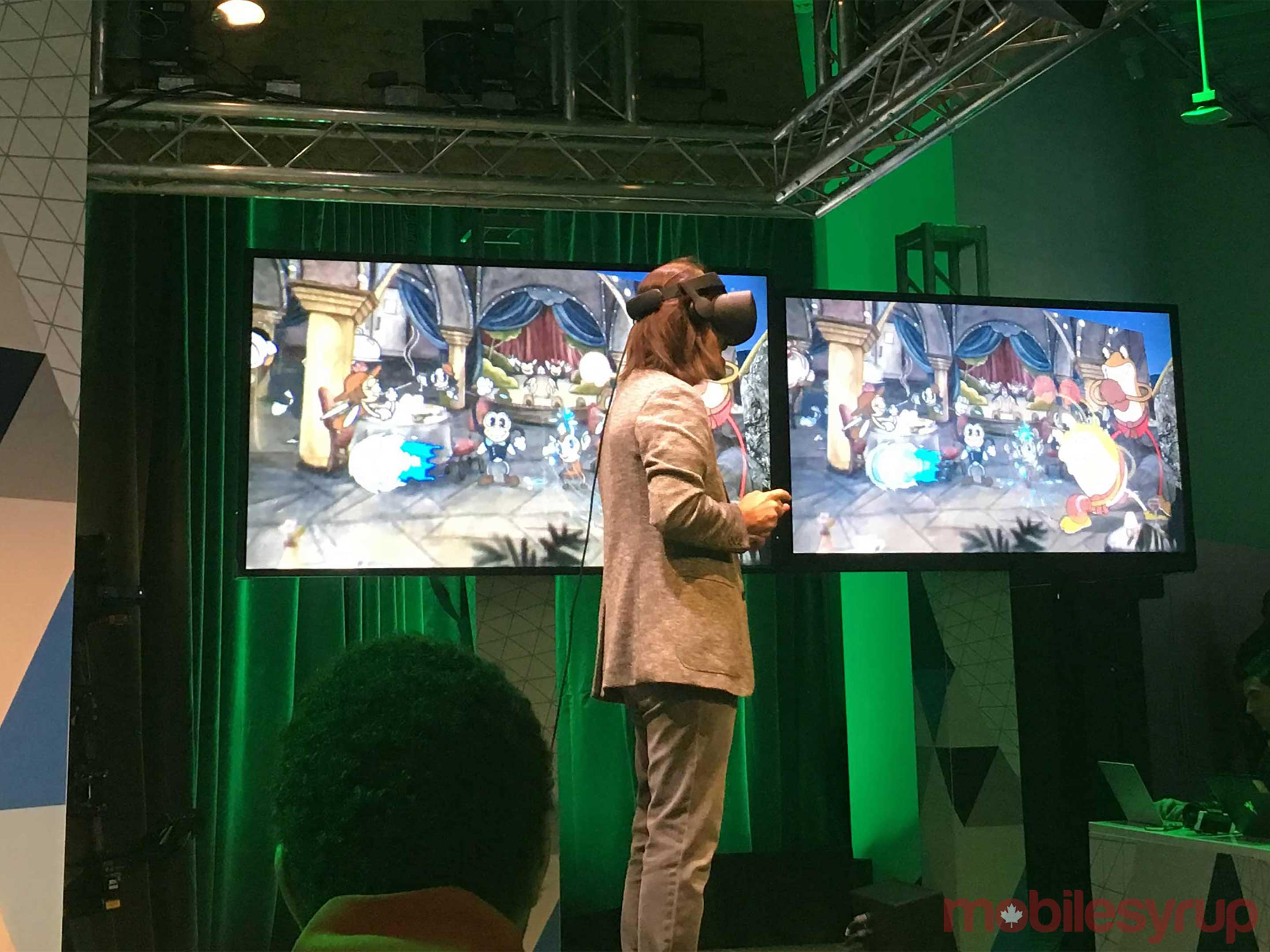
Perhaps the most interesting tidbit from Kipman’s presentation, though, is how he doesn’t consider any of these apps to represent the definitive Windows Mixed Reality A piece of technology can oftentimes be defined by its “killer app” — in other words, the title that must be experienced and is a huge selling point for the device as a result.
However, Kipman says Windows Mixed Reality’s killer app isn’t any one particular game or other application, but rather, the tech’s ability bring people together that should truly sell it to people. “It’s a physically present way to communicate without actually having to be physically present… mixed reality gives you these ‘super powers’ to transcend time and space.”
He cited some of the ways that mixed reality can achieve this, such as employers connecting with their employees, or family members meeting up with one another. Kipman also pointed out that mixed reality even led to the world’s “first-ever acquisition of a company” in a virtual world.
In his demonstration, Kipman’s avatar warped to an office space where he met with other avatars representing employees from Altspace VR, a Redmond City, California-based startup focusing on social virtual reality content. The group then jumped to a outdoor camp setting where the AltspaceVR team lay gathered around a fire. Throughout this part of the demonstration, Kipman and the AltspaceVR crew were talking in real-time through the headset and motioning to one another through colourful avatars.
Here, Kipman made the announcement that Microsoft had acquired AltspaceVR, which was previously struggling and expected to close its doors. According to Kipman, this type of prolonged meeting is what he envisions as the true potential for mixed reality — allowing people from different parts of the world to communicate with one another in all kinds of meetups.
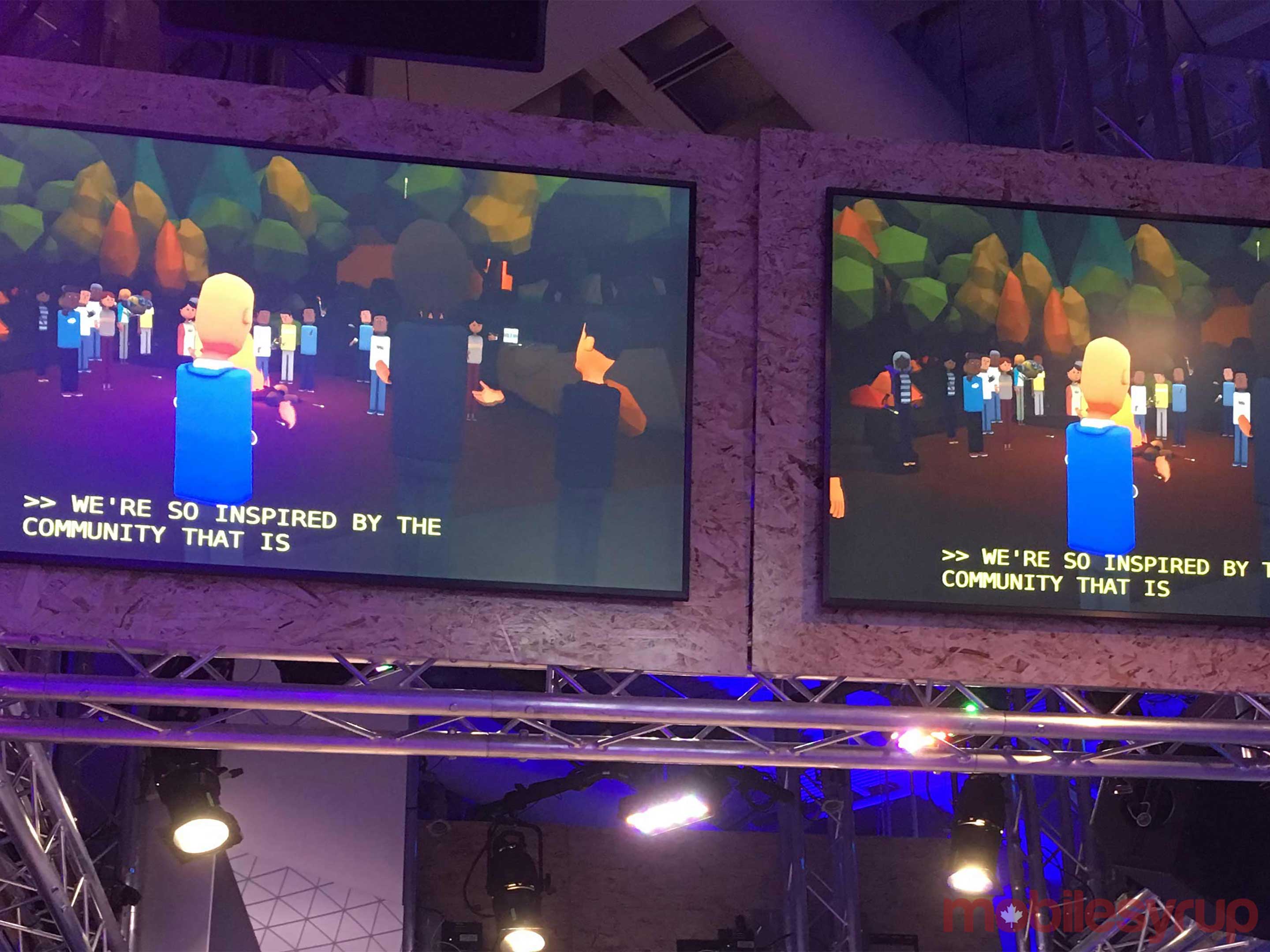
Seeing Kipman describe the tech this way certainly explains why he made the bold statement that smartphones “are already dead” from earlier this year, even if I’m not entirely sold on that idea as of yet. The Brazilian software engineer especially explains with gusto when referring to mixed reality as a communicative tool.
However, for now, Skype and avatar meetups are the extent of direct communication opportunities through Windows Mixed Reality. I can certainly see the promise in this form of contact, but as it stands, the mixed reality experience is largely a solitary one. That said, Kipman noted that while there are no announcements to be made as of yet regarding letting other users enter your Cliff House, it’s a feature Microsoft is looking into adding at some point. Given Altspace’s social-centric talents, such as offering live shared room comedy shows in VR, it’s easy to see how this new acquisition can help with developing multi-user Cliff House experiences.
Simple to use headsets
At the event, I was able to briefly try all five of the Windows Mixed Reality experiences. For the most part, I found them all easy to use and ostensibly identical in terms of function. There are some minor differences between them, though. Some of the headsets, such as those from Dell and Acer, feature a visor that flips up and down over your eyes. Personally, I found this more comfortable to put on and adjust, especially because I wear medium size framed glasses.
The fixed visor of, say, the Samsung HMD Odyssey is personally rather cumbersome to put on with a pair of glasses fixed on my head. On the other hand, the HMD Odyssey has the built-in spatial AKG headphones, which sound great, are adjustable and won’t fall off your head, unlike standalone headsets.
Otherwise, they all are rather comparable in terms of pricing, with costs ranging from $589 to $650 CAD. You’ll also need to buy a Windows Mixed Reality-compatible PC. The specifications for each headset are listed on Microsoft’s site, so you can see what your PC can run. Alternatively, select PCs will be specially marked as being “Windows Mixed Reality ready,” so consumers will know exactly which ones can support the headsets right out of the box.
Of course, seeing is believing, especially when it comes to burgeoning expensive tech like mixed reality. With that in mind, Microsoft will be offering public demos in its various brick-and-mortar locations across Canada and the U.S. starting October 17th. You can find your closest Microsoft Store here.
The future is now — sort of
To be clear, it remains to be seen just how long people want to spend in these virtual worlds. While I personally have spent hours with VR headsets and experienced little to no discomfort, I also know that not everyone reacts the same way, sometimes suffering from nausea and other sickness. As well, this kind of technology is still rather expensive, costing well over $1000 CAD to purchase the requisite headset and compatible PC. These are all barriers to entry that will need to be worked out for this kind of technology as a whole.
Nonetheless, with this tech being in its infancy, Microsoft has wisely put itself in a position where it’s an industry leader by getting involved so early. With virtually no current competition in the “mixed reality” market, and reported plans to release the next major iteration of HoloLens in 2019, Microsoft is in a great place going forward to continue to develop and build on this potential. And based on what I’ve experienced from Windows Mixed Reality so far, this is a future worth looking forward to.
MobileSyrup may earn a commission from purchases made via our links, which helps fund the journalism we provide free on our website. These links do not influence our editorial content. Support us here.

